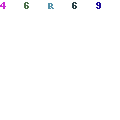Physics professor finds support for theory on recombination effects of Xenon
Four years of research across two universities resulted in physics professor Edward Ackad finding support for one of two theories regarding recombination effects of the gas Xenon.
 Ackad’s research work, “Recombination effects in soft-x-ray cluster interactions at the Xenon giant resonance,” was recently published in the New Journal of Physics and theoretically explores a previously conducted experimental study.
Ackad’s research work, “Recombination effects in soft-x-ray cluster interactions at the Xenon giant resonance,” was recently published in the New Journal of Physics and theoretically explores a previously conducted experimental study.
Thus far, ultra-intense x-rays that interact with matter have best been described as “a sum of microscopic phenomenon, not a broad collective macroscopic phenomenon,” according to Ackad.
“There is a debate in this community that does this research as to whether [you] can describe [this] as simply a sum of individual pieces or whether there are collective things where you need to always look at the whole,” Ackad said “This research strongly favors looking at it in individual pieces. Because this reproduces an experiment… that gives a lot of credence to this argument that it should be the sum of microscopic [events].”
Ackad’s research looks at nanoscopic clusters, which he said are “tiny chunks of matter being irradiated by an ultra intense x-ray laser pulse,” and examines what happens when the experiment is simulated on the computer.
“By doing that, it lead us… [to] details that the experiment couldn’t tease out,” Ackad said.
Ackad’s work calculated a “full signal,” which he said has not been done before in the field. Experimental signals, according to Ackad, are “a mix of clusters being irradiated not just at the peak of the laser pulse, but also at other intensities.”
“You can think of the laser pulse as a ripple in space,” Ackad said. “Some clusters only get irradiated by the edges and some get hit head-on. Our full experimental signal took this into account and added the signal up from not just the peak but from all pieces of the pulse. So you can think of it as including both glancing and head-on laser shots.”
Before this experiment, Ackad said only “head-on laser shots” have been explored, meaning that only qualitative comparison could occur with the experimental signal.
Ackad said his results found that the electron plasma is saturated; that is, if the intensity were to increase the electrons “couldn’t get any hotter.” Ackad also said his experiment was conducted with x-rays that are tuned when they hit the gas Xenon, two or three electrons almost always “pop out.”
Somehow the atoms are recombining, according to Ackad, and “trapping an electron [that was] ionized before and putting it back.”
“We were able to fully model this and determined not just where it was coming from but at what intensity this would work,” Ackad said.
The electron was coming from its “initial position in the cluster,” according to Ackad.
“We were able to say atoms initially in the core of the cluster, not the outer edges, were much more likely to recombine,” Ackad said. “We also determined that the 1+ signal was coming from the lower intensity part of the pulse. So we determined both the location in the cluster initially and [the] location compared to the center of the laser pulse…”
These findings, according to Ackad, affect the approach he uses to teach quantum mechanics.
“One [change] is the approach I use is not the standard approach to teaching quantum mechanics. Because my research seems to point toward this idea of a sum of microscopic events, then I think I tend to teach quantum mechanics in this very microscopic approach where you understand what goes on underneath and then you look at everything else as emergent properties,” Ackad said.
Ackad’s work began at the University of Ottawa and concluded at SIUE.
Filed Under: Physics












